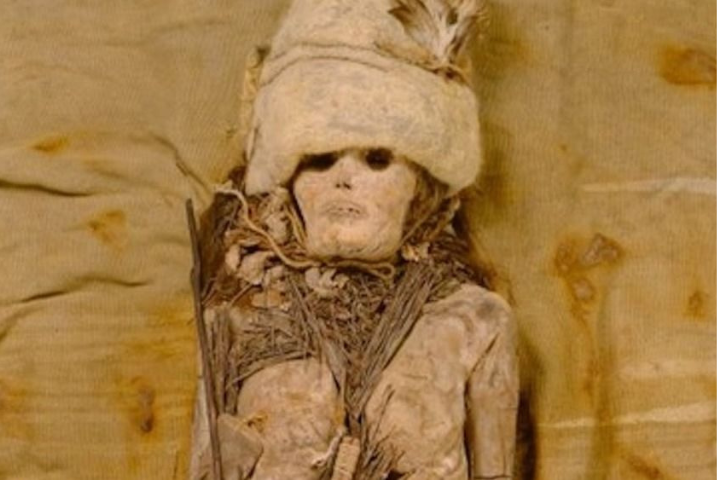In a groundbreaking discovery, scientists have sequenced the DNA of the world’s oldest cheese, found alongside Bronze Age mummies in China’s Tarim Basin. The ancient cheese, estimated to be around 3,600 years old, has yielded valuable information about the origins of kefir cheese and the evolution of probiotic bacteria over millennia. This rare and valuable opportunity has allowed researchers to gain a clearer picture of ancient human life and their interactions with the world through the lens of dairy products.
Unraveling the Mystery
About two decades ago, archaeologists discovered mysterious white substances smeared on the heads and necks of several mummies found in the Xiaohe cemetery in Northwestern China’s Tarim Basin. These mummies dated back to around 3,300 to 3,600 years ago, from the Bronze Age. At the time, scientists suspected these substances might be a type of fermented dairy product, but they couldn’t identify exactly what kind.
The results, which were released on Wednesday in the journal Cell, have opened a “new frontier in ancient DNA studies,” according to Harvard University’s Christina Warinner, the John L. Loeb Associate Professor of the Social Sciences and Anthropology. “This type of research was unthinkable even a decade ago.” Warinner did not participate in the study.
According to her, the majority of fermented foods made today are made with a small number of commercial strains of bacteria and yeast that are primarily generated in laboratories. The once-wide variety of heirloom microorganisms that people used to make today’s most recognizable foods, such cheese and bread as well as beer and wine, is little known.
Tracing Bacterial Evolution
Being able to sequence the bacterial genes in the ancient kefir cheese gave the team an opportunity to track how probiotic bacteria evolved over the past 3,600 years. Specifically, they compared the ancient Lactobacillus kefiranofaciens from the ancient kefir cheese with the modern-day species.
Today, there are two major groups of the Lactobacillus bacteria — one originating from Russia and another from Tibet. The Russian type is the most widely used globally, including in the US, Japan, and European countries, for making yogurt and cheese.
The team found that the Lactobacillus kefiranofaciens in the samples was more closely related to the Tibetan group, challenging the long-held belief about the origins of modern kefir cheese.
Significance and Future Implications
“This is the oldest known cheese sample ever discovered in the world,” says Qiaomei Fu, the paper’s corresponding author at the Institute of Vertebrate Paleontology and Paleoanthropology, Chinese Academy of Sciences. “Food items like cheese are extremely difficult to preserve over thousands of years, making this a rare and valuable opportunity. Studying ancient cheese in great detail can help us better understand our ancestors’ diet and culture.”
The discovery suggests that kefir culture has persisted in Northwestern China’s Xinjiang region since the Bronze Age. It also allows researchers to observe how bacteria have evolved over millennia and gain insights into ancient human life and their interactions with the environment.





GIPHY App Key not set. Please check settings